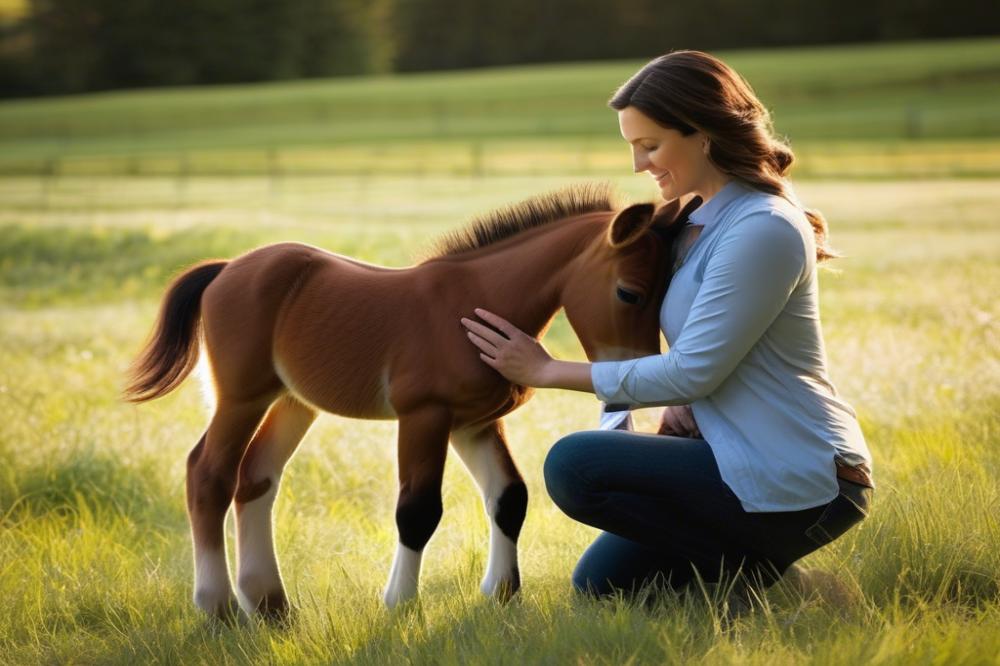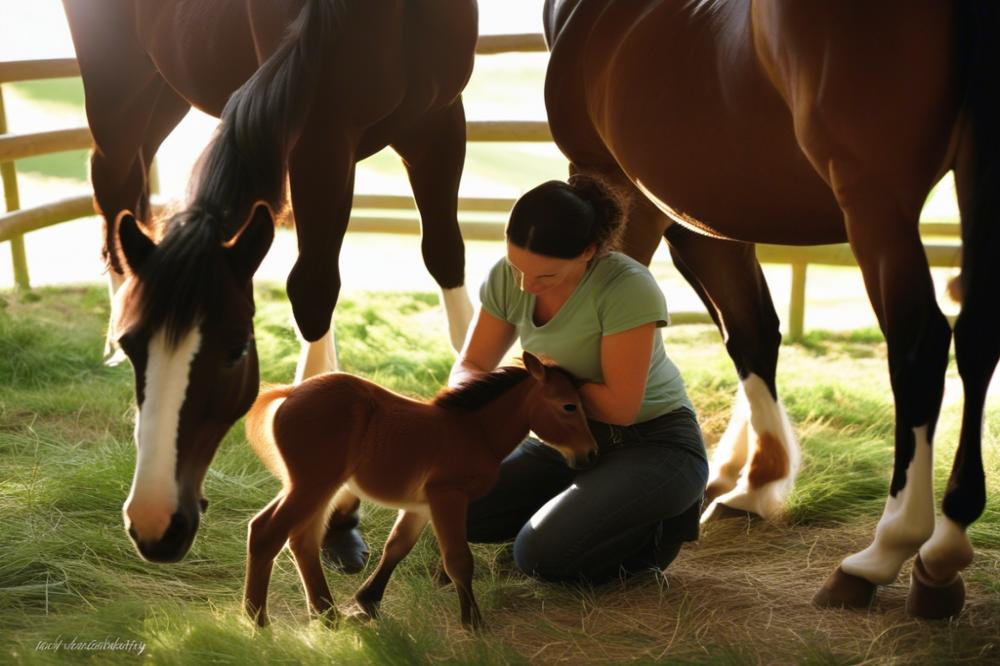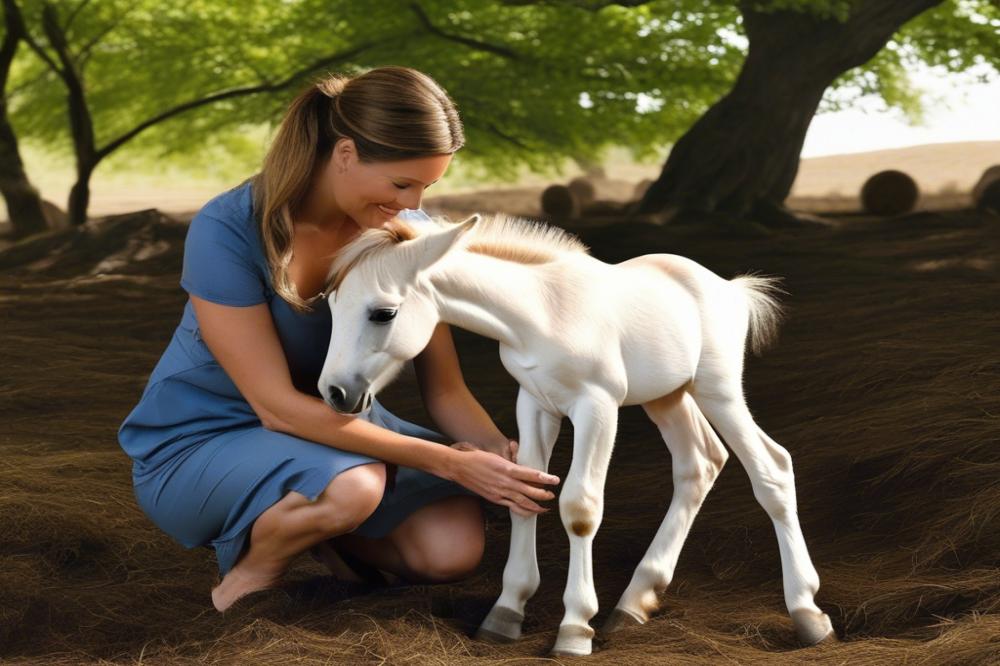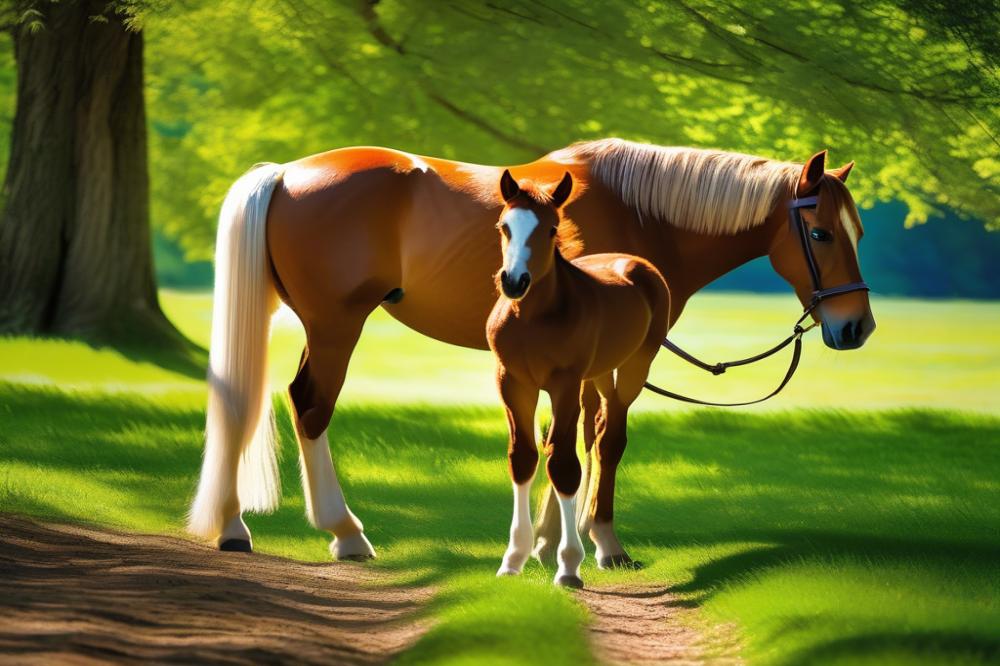Introduction
Foal Imprinting is a crucial process that shapes a young horse’s future behavior and training potential. This technique involves exposing foals to various stimuli immediately after birth, aiming to create positive associations with humans and their environment. Understanding the significance of this early interaction cannot be overstated; it impacts not only the foal’s behavior but also its ability to adapt to training as it matures.
The role of imprinting becomes particularly vital within the context of horse training and development. When done correctly, it sets the stage for a more cooperative and trusting relationship between the foal and its handler. This early bonding lays the groundwork for future learning experiences, making it easier for the horse to accept and respond to training commands. Many trainers believe that successful imprinting can minimize common behavioral issues later in life.
This article will explore the importance of imprinting and how it influences Equine Behavior. First, we will delve into the science behind the process, including critical periods of learning. Next, we will discuss practical methods for effective imprinting, highlighting essential techniques and best practices. Finally, we will look at potential challenges and how to address them to foster a harmonious bond between foals and humans. A comprehensive understanding of this topic will not only help in establishing a solid foundation for foals but also enhance the overall training experience.
Understanding Foal Imprinting

Foal imprinting refers to a specific process that occurs shortly after birth. This practice helps a foal bond with humans and other animals. Such connections can foster trust and cooperation as the foal matures. This concept may seem simple, but it plays a significant role in a young horse’s emotional development.
The science behind this phenomenon is rooted in neurobiology. When foals are born, their brains are still developing. During this critical period, they absorb information from their environment. The neurological pathways that form in these early hours and days are foundational. They create lasting impressions that influence behavior throughout life.
Several factors can impact the effectiveness of imprinting. Timing is crucial; the process should occur soon after birth. Additionally, the gentleness and calmness of the human involved matter greatly. A soothing environment reduces stress for both the foal and the handler. Interaction should involve gentle touches, soft voices, and patience. Repetition of positive experiences reinforces the bond. Awareness of the foal’s mood can guide handlers on how to proceed.
The Imprinting Process

Foal imprinting involves a series of steps designed to build a strong bond between the foal and humans. It typically starts shortly after birth. The first hours of life are crucial for creating this connection. Imprinting can help the foal become more accepting of human presence and handling.
Steps in the Foal Imprinting Process
Begin by allowing the foal to dry off after birth. It should bond with its mother first. Once the foal is more stable, gently approach it. Speak softly to reassure the young horse. Gradually touch different parts of its body. Start with the neck and shoulder, moving down to the legs and hooves.
Introduce the halter at this early stage. The aim is to get the foal comfortable with wearing it. After the halter is accepted, practice walking on a lead rope. This helps in building trust and familiarity.
Timing and Age of Foals for Optimal Imprinting
The best time for imprinting is within the first few hours after foaling. Foals are most receptive to learning during this period. Ideally, they should be between 1 and 4 days old for maximum effect. After this window, they may become more cautious and less open to new experiences.
Recommended Techniques for Handling and Sensory Experiences
Handling techniques should be gentle but firm. Keep interactions calm and consistent. Expose the foals to various sensations like touch, sound, and sight. Use your hands to stroke the foal’s body while talking in a soothing voice. Introduce different objects, such as brushes or toys, to stimulate curiosity.
Always prioritize safety for both the foal and the handler. Remain aware of the foal’s body language. Signs of stress or discomfort must be addressed immediately. Slow down if necessary. This process can lay the groundwork for a future relationship built on trust and respect.
Building Trust Through bonding

Trust forms the foundation of successful horse training. When a horse trusts a person, training becomes more effective. Building such trust requires time and patience. Creating a bond with a foal during the early stages of life can lead to a more willing partner later on.
Several techniques can help foster this bond. Regular handling is important. Spend time with the foal every day, even if just for a few minutes. Gentle touch and quiet voices can make a big difference. Allowing the foal to explore its surroundings while you are present helps it feel secure. This environment builds a connection between the foal and its handler.
Additionally, observing the foal can reveal much about its needs and feelings. Understanding its body language is key to developing trust. For instance, if the foal appears nervous or hesitant, easing away from pressure can help it feel safe. Building trust is a gradual process that benefits from consistency and reassurance.
Positive reinforcement plays an essential role in this relationship. Reward systems encourage desired behaviors and strengthen the bond. Using treats or verbal praise when the foal performs well helps it associate training with positive experiences. This method reinforces trust, making learning enjoyable for the foal.
Maintaining this bond after imprinting is vital. Continuing to interact frequently will deepen your relationship. Routine care tasks, such as grooming and feeding, offer opportunities for connection. These moments allow the foal to see you as a trusted friend. Building trust takes commitment, but the results are rewarding.
Socialization and Fear Reduction
Socialization plays a vital role in the early development of foals. Young horses need to become familiar with various sights, sounds, and experiences. This process helps them grow into well-adjusted adults. A well-socialized foal is less likely to develop anxiety and fear later in life. Immediate interactions are crucial during the initial stages of their growth.
Positive experiences help reduce fear. Gentle handling by caregivers builds trust. Foals who are accustomed to human touch are more relaxed. Regular interactions with different people can be beneficial. These encounters teach foals that not all humans are a threat. In addition, encouraging exploration of new environments fosters confidence. When foals encounter various stimuli, they learn to react calmly.
Incorporating other animals during this process can make a significant difference. Being around other horses helps foals learn social cues. They gain valuable communication skills that will serve them well in the future. Mixing with calm dogs or goats can also promote curiosity. Diverse experiences broaden their understanding of the world around them. This exposure reduces the likelihood of fear responses when encountering new situations.
Different environments should be introduced gradually. Taking foals to various settings allows them to adapt. A quiet barn, an open field, or even a bustling farm can provide unique challenges. Each location presents new sights and sounds for foals to investigate. Carefully observing their reactions is essential. This way, caregivers can guide them through potential fears. All these strategies contribute to a balanced and confident horse.
Veterinary Care and Early Handling
Veterinary care plays a vital role in the health of foals during their early development. Regular check-ups are essential to catch any health issues. Vaccinations help protect foals from common diseases. Deworming is also important, as parasites can harm their growth and health. A veterinarian can provide guidance on nutrition specific to foals, which is crucial at this stage.
Moreover, safe handling practices should be emphasized both during and after imprinting. Foals are sensitive creatures. Gentle touch and calm voices can help build trust. Unsafe handling can lead to fear or anxiety in a young horse. It is crucial to approach foals quietly and avoid sudden movements. Ensuring that all interactions feel positive sets a strong foundation for later training.
Monitoring developmental milestones is key for assessing a foal’s progress. From the moment they are born, foals should show consistent growth patterns. Weight checks can help track their health. Socialization experiences should also be monitored, as exposure to new situations supports emotional development. Observing their behavior and movement can indicate how well they are adjusting. Overall, early veterinary care and careful handling lay the groundwork for a healthy and well-adjusted horse.
Final Thoughts on Foal Development
Recapping the significance of imprinting, it is essential to recognize its role in bonding. This early process can have a profound impact on a foal’s long-term behavior and responsiveness to training. Understanding that an imprinting session lays the groundwork for all future interactions is vital for anyone involved in horse training. When done correctly, these sessions can foster trust and respect between the foal and handler.
Success in horse development comes down to careful planning and thoughtful execution. Creating a calm environment during the initial contact can make all the difference. Trainers should prioritize patience and consistency throughout the process. Avoid overwhelming the foal with too much stimulation at once. Gradually introducing various sights and sounds contributes to a more adaptable horse.
Encouragement stems from knowing that practicing effective imprinting techniques can yield long-term benefits. Each encounter helps build a strong foundation for future lessons. Taking the time to establish a positive relationship can pay off significantly as the foal matures. As trainers and handlers, our goal should be to foster a love for learning and connection. This approach leads to a more harmonious partnership between horses and humans, paving the way for a successful journey in horse training.



